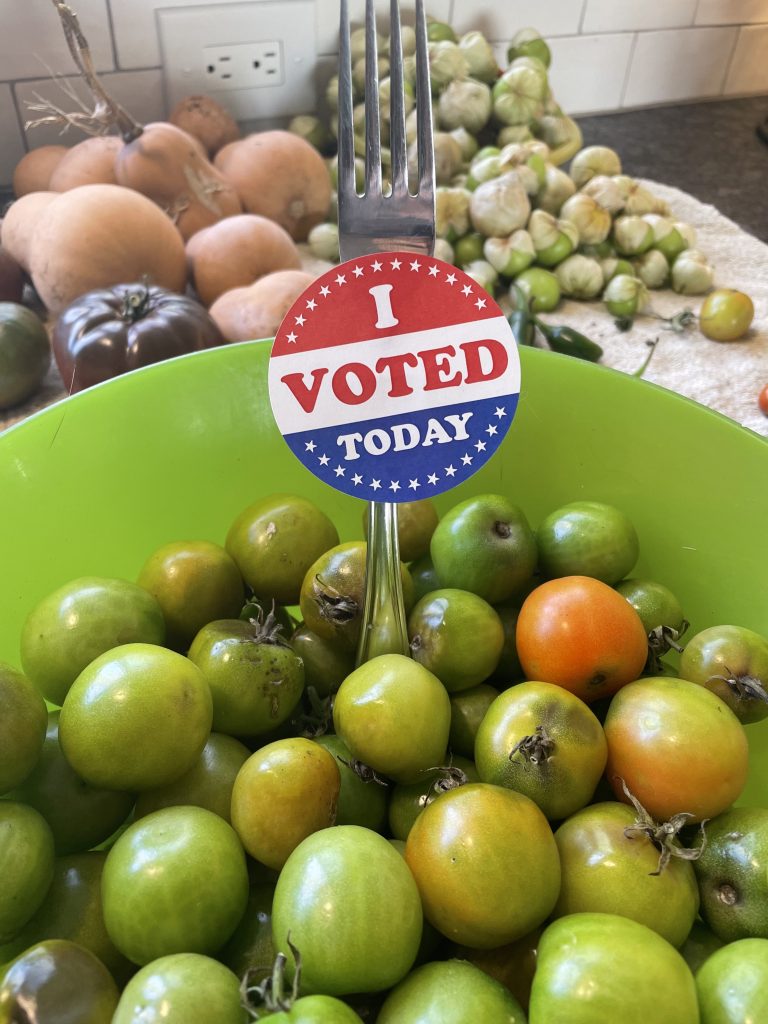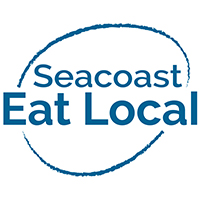By Morgan Morani, Food Access Coordinator

As recent elections have come and passed, two pressing bills are on the agenda relative to food access: the Child Reauthorization Bill (which is seven years behind) and the 2023 Farm Bill. Since both of these are large issues, we are going to tackle them in separate blogs.
First up: The 2023 Farm Bill.
What is it?
Every five years, Congress discusses the Farm Bill which is the primary agriculture and food policy bill in the federal government. The 2023 bill will have a budget of close to $1 trillion dollars.
Why is it important?
The deliberations will dictate how this funding will be spread across farm and nutrition programs including SNAP. Currently, the Farm Bill directly supports many of the programs offered to our community of growers, producers, and eaters.
Local food can be viewed as a table supported by many different legs, including consumers, food producers/growers, government and community organizations, and distributors and aggregators. At the base of each leg is the funding that supports each sector of the food system. The Farm Bill is a substantial and key portion of each leg.
What’s happening with it?
76% of the Farm Bill’s funding, $325.8 Billion from 2019-2023, was dedicated to SNAP and other nutrition assistance programs.
The 2023 Farm Bill will reassess where funding and appropriations for these programs should land. Recently, the American Farm Bureau supported the need for “a unified farm bill which keeps nutrition and farm programs together.” They also mentioned that the “bill supports the people who produce the food and supports the people who need assistance accessing nutritious food for their families.” Purdue University’s survey of consumers in September 2022 found clear majorities in favor of policy to “[p]ermanently extend and expand pandemic-related changes to SNAP that increase benefits and lower barriers to participation.”
SNAP helps put food on the table of 41 million people. Without this infrastructure, not only would millions of people dive deeper into food insecurity but unwarranted and unsustainable stress would be placed on emergency food assistance programs like food banks and pantries.
A Farm Bill that continues to support SNAP expansion would also continue to uplift the local food system. SNAP generates $1.79 for every $1.00 spent in economic activity, keeping that activity local by shopping from farmers’ markets and farms, can put money in the pockets of local food producers and support our New Hampshire economy. SNAP provides 9 meals for every 1 meal the Feeding America Network of Food Banks and pantries does.
Where can I learn more?
To learn more, please visit this link.
Update on the Health Emergency Declaration and SNAP
Once the Health Emergency Declaration ends, so will the emergency allotments SNAP households have been receiving due to the pandemic. Many are calling this the “hunger cliff,” as recipients are slated to lose about $82 per month once these additional allotments end.
In New Hampshire, these additional SNAP allotments are now extended through the end of January. As inflation continues, and grocery prices continue to rise, this loss of $82 will be critical to keeping food on the table of many Granite Staters. Come February if the declaration is not extended, many Granite Staters may fall into food insecurity who were lifted out during the pandemic.
A few other SNAP expansion bills are also currently being proposed and you can learn more about each here:
HR4077/S 2192 Closing the Meal Gap Act of 2021
Status: Referred to the Subcommittee on Nutrition, Oversight, and Department Operations on 7/28/2021
- SNAP Benefits to shift from the currently utilized Thrifty Food Plan to the Low Cost Food plan
- Boost monthly minimum allotment to EBT cards
- Boost benefits for populations struggling between paying for food or shelter and medicine
H.R. 1753 (Improving Access to Nutrition Act of 2021)
Status: Referred to the Subcommittee on Nutrition, Oversight, and Department Operations on 5/13/2021
- Remove the 3 month time limit on unemployed ABAWD, to ensure all have access to nutrition.
H.R. 1919/S.2515 (Enhance Access to SNAP Act 2021)
Status: Referred to the Subcommittee on Nutrition, Oversight, and Department Operations on 5/13/2021
- Increase SNAP access for low-income college students.
H.R. 5227 (Lift the Bar Act of 2021)
Status: Referred to the Subcommittee on Nutrition, Oversight, and Department Operations on 10/5/2021
- Remove the 5 year waiting period on SNAP and other federal benefit programs for eligible immigrants.
H.R. 6338 (SNAP Plus Act of 2021)
Status: Referred to the Subcommittee on Nutrition, Oversight, and Department Operations on 1/4/2022
- Allow purchasing of hot foods with SNAP
Additional blog post on Child Reauthorization Bill coming soon!
Good reads and Citations to learn more:
https://frac.org/blog/on-the-road-to-the-2023-farm-bill
https://frac.org/wp-content/uploads/2022-FarmBillPriorities.pdf
https://frac.org/blog/snap-plus-act-of-2021
https://frac.org/wp-content/uploads/2022-FarmBillPriorities.pdf
